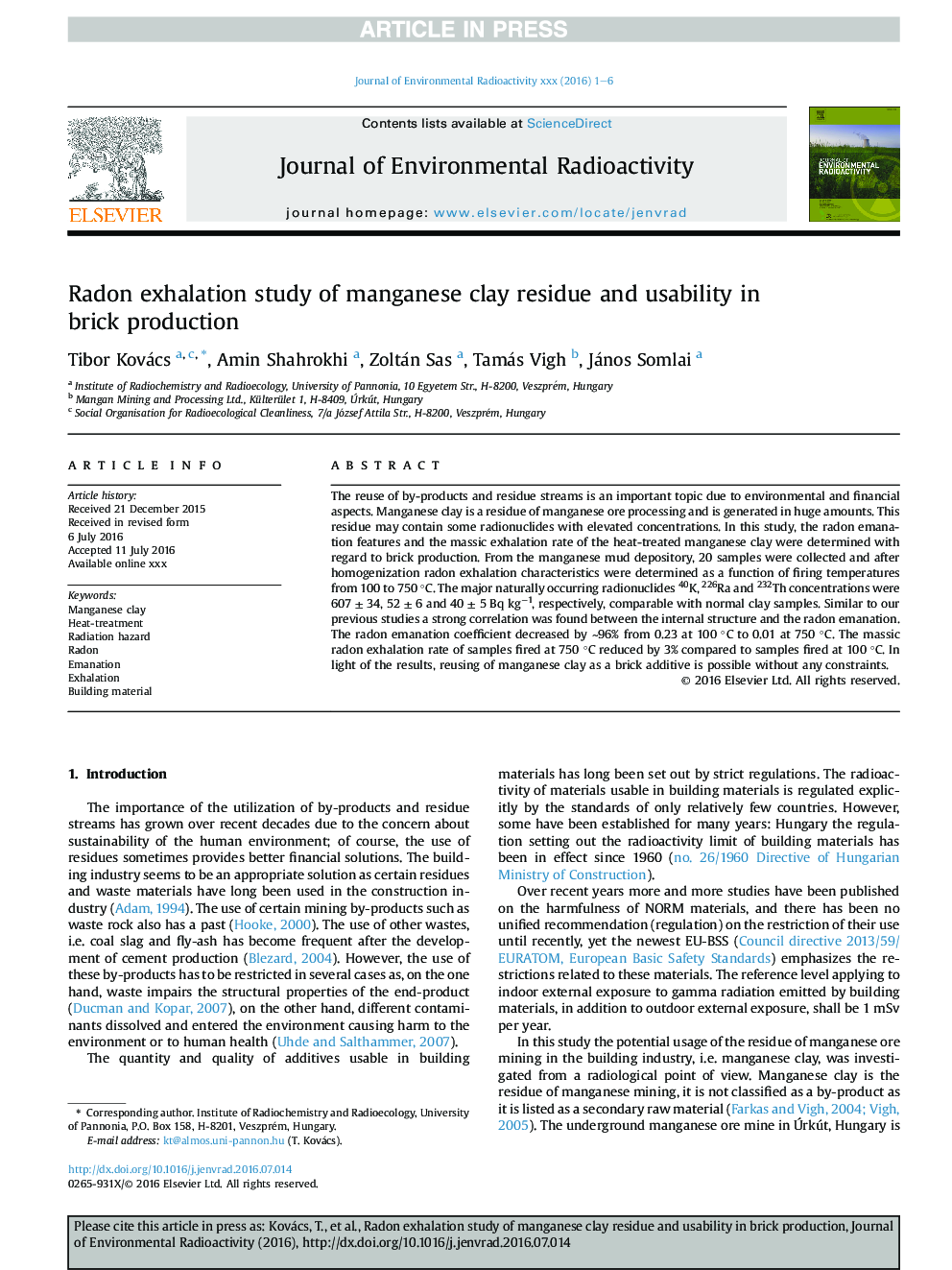| Article ID | Journal | Published Year | Pages | File Type |
|---|---|---|---|---|
| 5477610 | Journal of Environmental Radioactivity | 2017 | 6 Pages |
Abstract
The reuse of by-products and residue streams is an important topic due to environmental and financial aspects. Manganese clay is a residue of manganese ore processing and is generated in huge amounts. This residue may contain some radionuclides with elevated concentrations. In this study, the radon emanation features and the massic exhalation rate of the heat-treated manganese clay were determined with regard to brick production. From the manganese mud depository, 20 samples were collected and after homogenization radon exhalation characteristics were determined as a function of firing temperatures from 100 to 750 °C. The major naturally occurring radionuclides 40K, 226Ra and 232Th concentrations were 607 ± 34, 52 ± 6 and 40 ± 5 Bq kgâ1, respectively, comparable with normal clay samples. Similar to our previous studies a strong correlation was found between the internal structure and the radon emanation. The radon emanation coefficient decreased by â¼96% from 0.23 at 100 °C to 0.01 at 750 °C. The massic radon exhalation rate of samples fired at 750 °C reduced by 3% compared to samples fired at 100 °C. In light of the results, reusing of manganese clay as a brick additive is possible without any constraints.
Related Topics
Physical Sciences and Engineering
Energy
Nuclear Energy and Engineering
Authors
Tibor Kovács, Amin Shahrokhi, Zoltán Sas, Tamás Vigh, János Somlai,
